Spiders are usually meals for reptiles and amphibians, but in a startling role reversal, these arachnids make dinner out of their potential predators.

At less than a tenth of an ounce, the regal jumping spider can prey on frogs and lizards two to three times its own weight, according to a new study in the Journal of Arachnology.
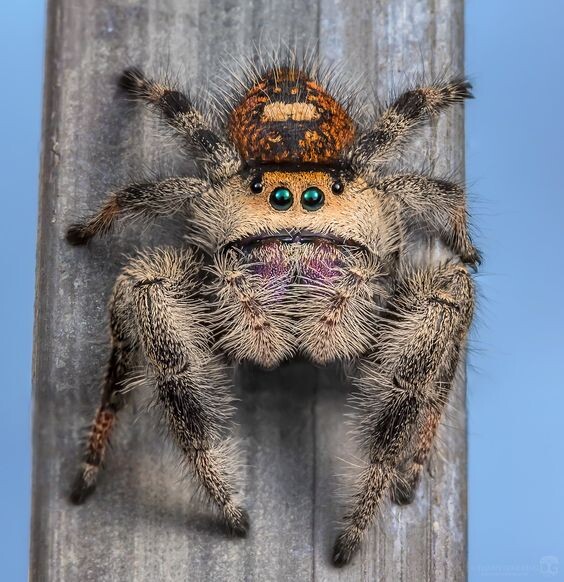
It’s the first time scientists have published observations of jumping spiders—the biggest family of spiders—eating vertebrates.
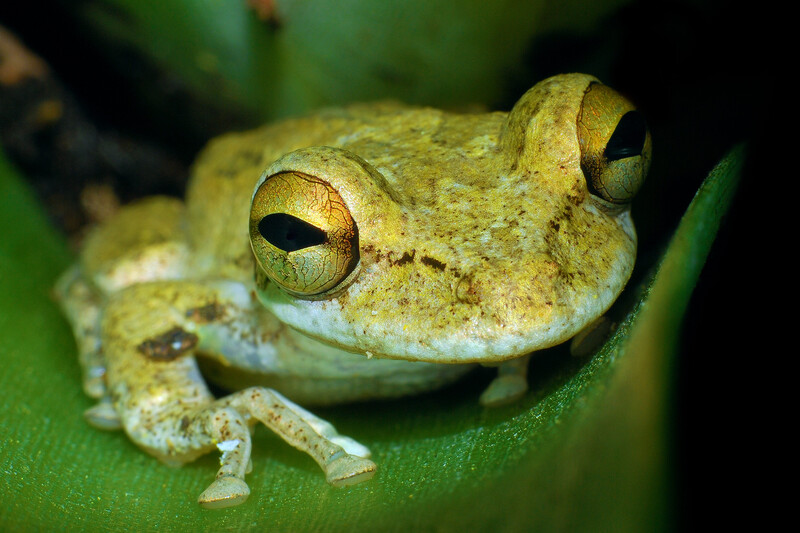
“Many frog apd lizard species are known to include spiders … in their diets,” study co-author Martin Nyffeler, a conservation biologist at Switzerland’s University of Basel, says by email.
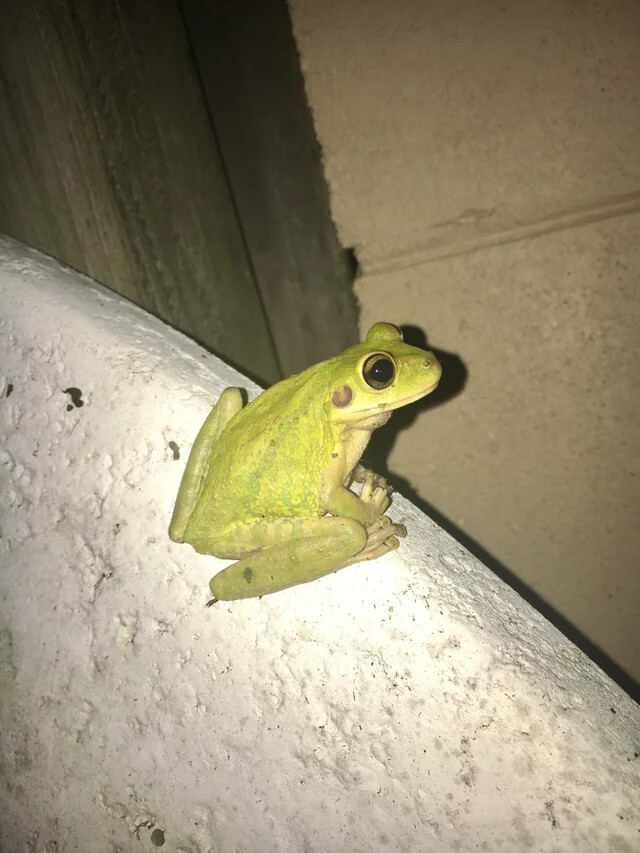
“I’m very impressed that there is a jumping spider species capable of killing and eating small frogs and lizards.”

Widespread in Florida, the inch-long regal jumping spider is one of the world’s biggest possibly giving it an edge against animals such as the Cuban tree frog, a Caribbean native now plaguing the Sunshine State. Nature blogger Loret Setters of Holopaw, Florida, witnessed a Cuban frog at the jaws of a jumping spider.
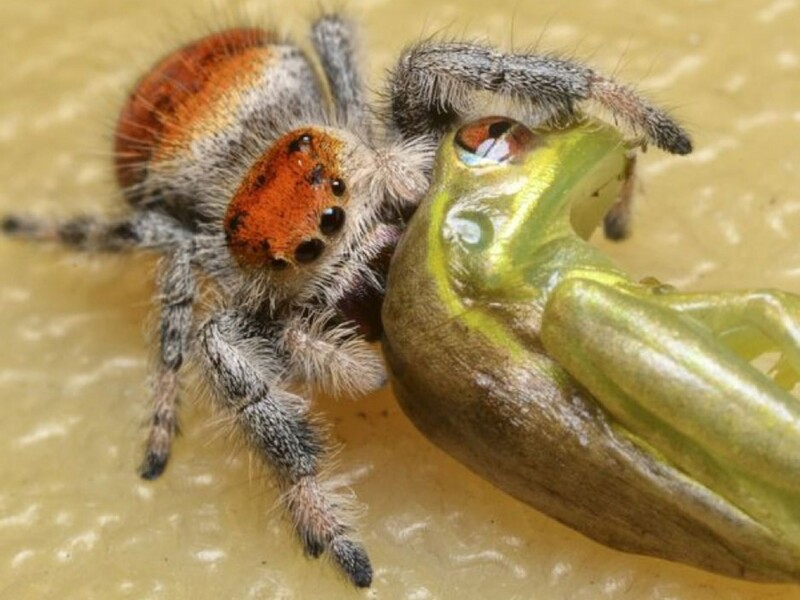
“He was staring me down, like, ‘You’re next!’” Setters recalls. “I was completely shocked.”
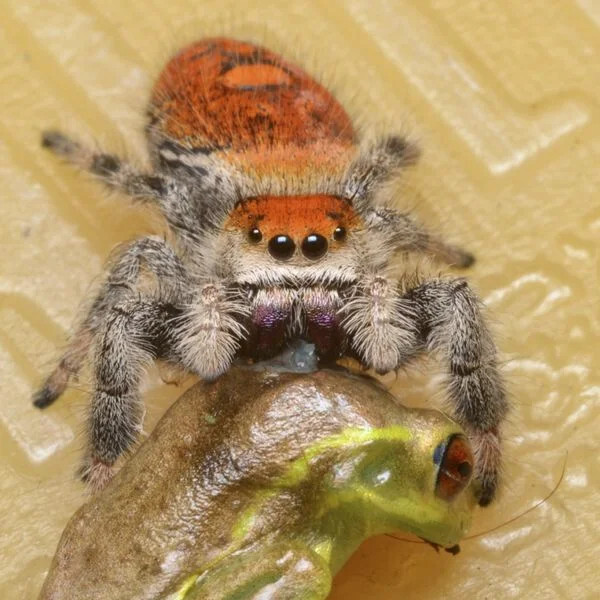
A Taste for Frog LegsNyffeler discovered searched the Internet for reports and photos of this odd phenomenon, finding a total of eight instances in seven Florida counties.
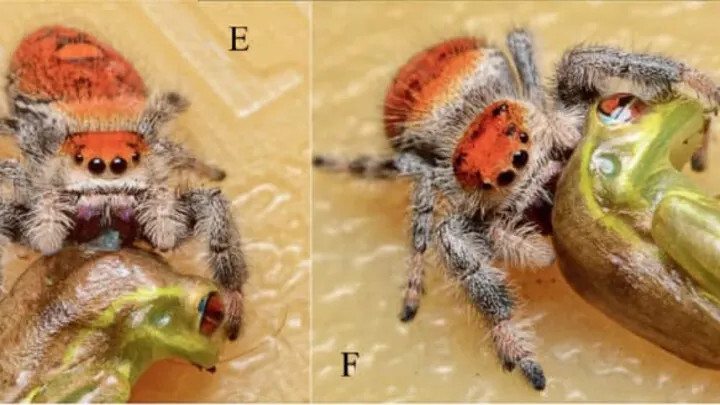
Another example came from Jeff Hollenbeck, an amateur spider scholar who photographed a female regal swallowing a Carolina apole ip Mariop County.
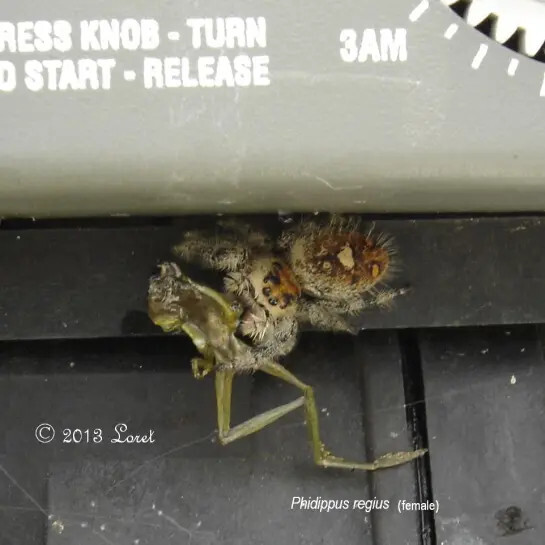
Researchers reckon the anole a speedy spider eating lizard was up to two-and-a-half times longer than its pursuer, but it was no match for the spider’s venom and the large, spine like structures on its front legs.
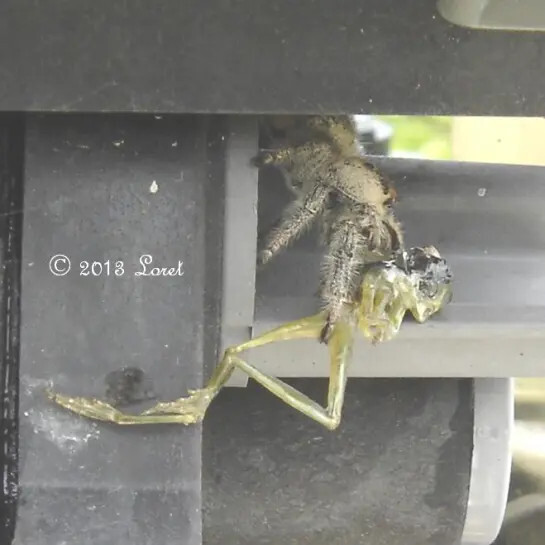
“I was surprised. … However, I really shouldn’t have been,” Hollenbeck says by email. The regal “is a very bold jumping spider, and large males and females won’t hesitate to take out prey larger than themselves, such as grasshoppers, dragonflies, etc.”
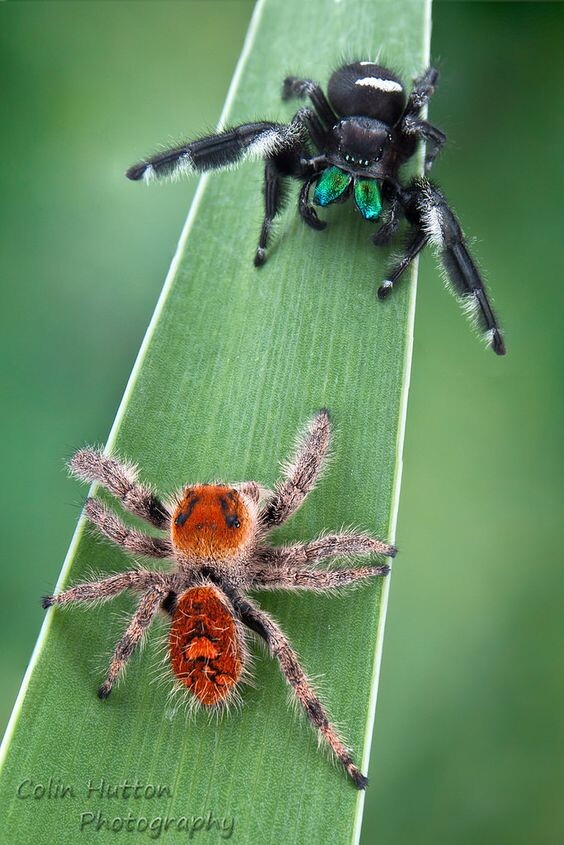
Unlike other spiders, jumping spiders are supremely sharp-eyed, relying on their stereoscopic and color vision to stalk and pounce on prey. The regal almost certainly deploys its “excellent eyesight” when hunting lizards and frogs, Nyffeler agrees.

Eating the EnemyBut why would a spider that normally sticks to smaller, easier victims—usually insects—branch out to more dangerous animals?
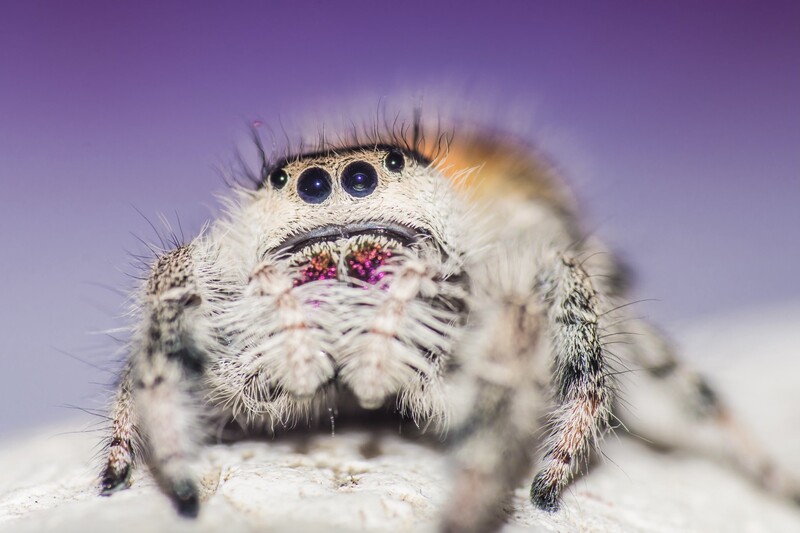
It could be simply they’re in the right place at the right time; research shows spiders can assess risks and finetune their hunting accordingly, says Thomas C. Jones, a behavioral ecologist at East Tennessee State University.
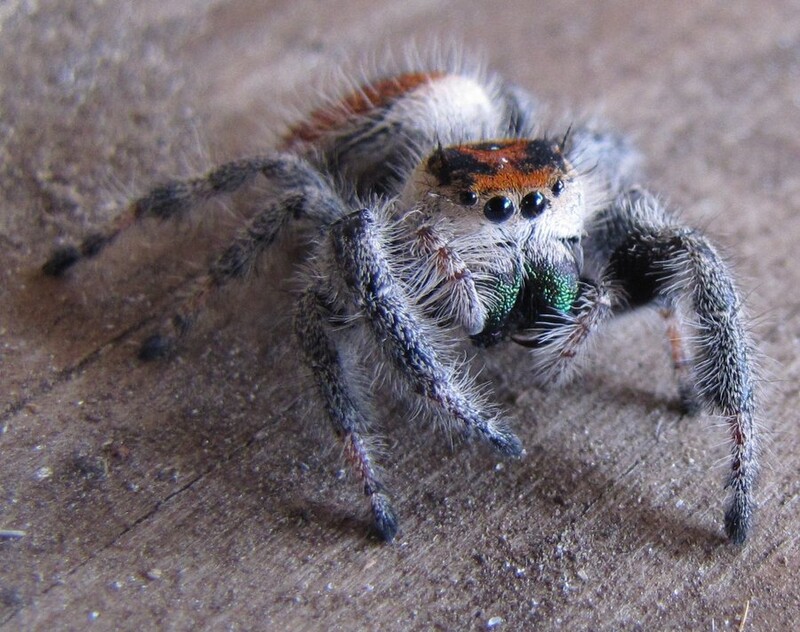
“They do tend to get bolder as they get hungrier,” says Jones, who was not involved with the study. Though it’s likely rare for jumping spiders to eat vertebrates, Nyffeler suspects the behavior has largely gone unnoticed because of the arachnids’ shyness.
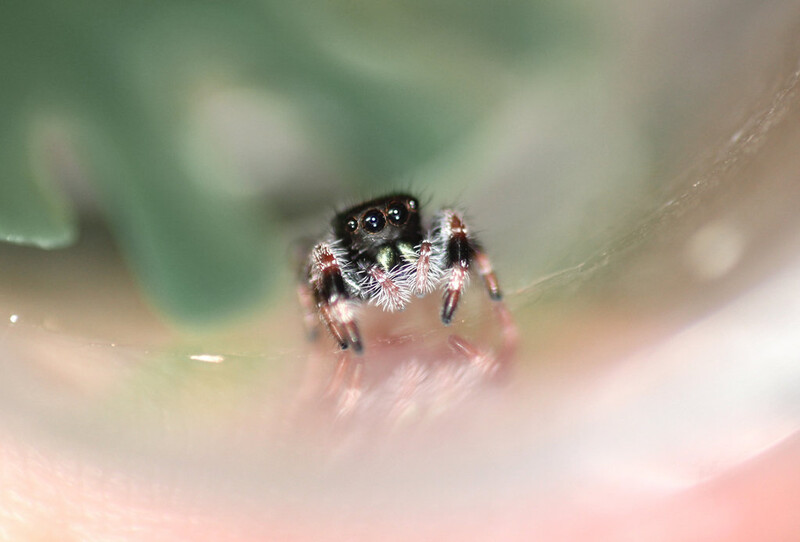
Though jumping spiders are Nyffeler’s favorites, he concedes, “I feel a little sorry for the frogs and lizards … because I am not only fond of spiders, I also like frogs and lizards.”
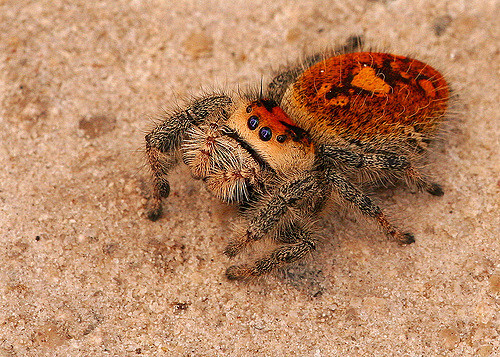
You Might Also Like











